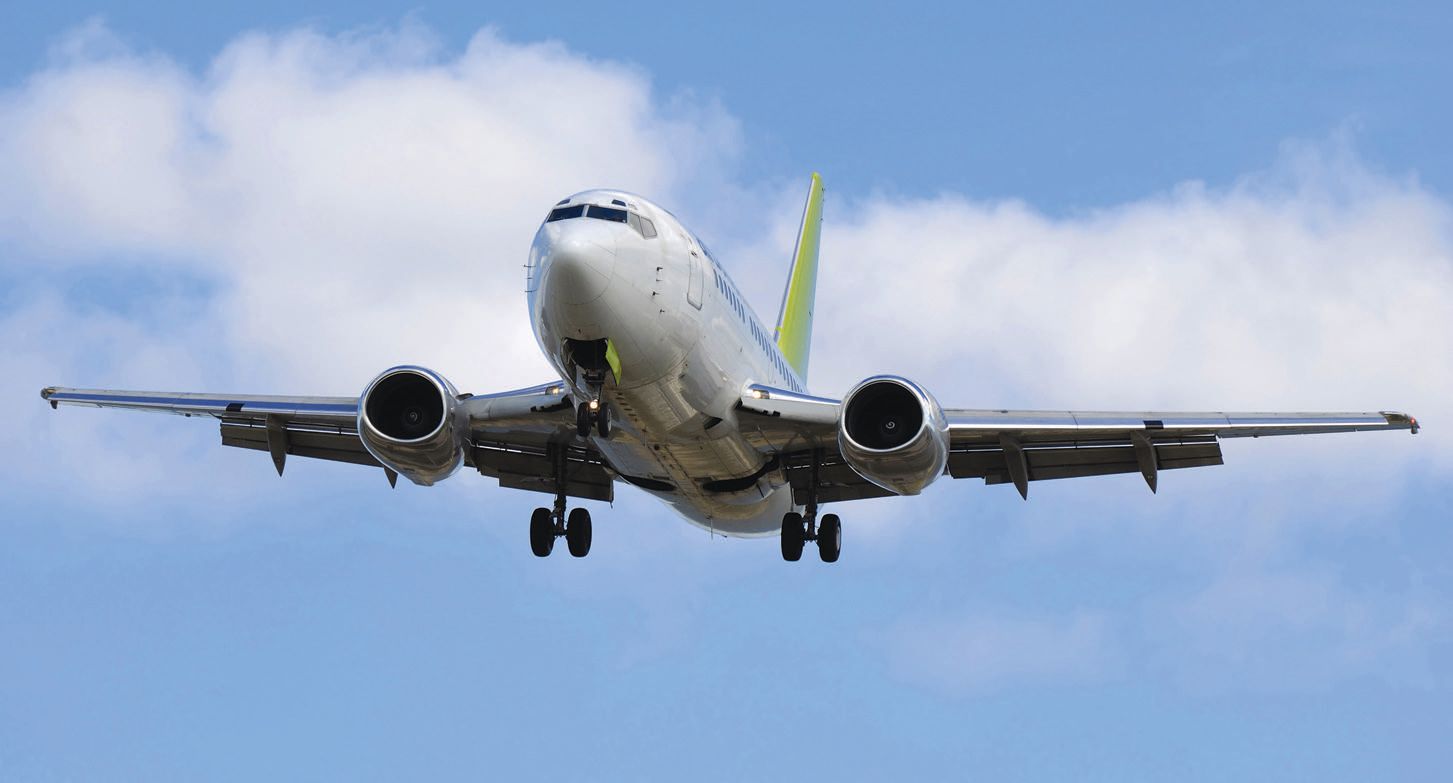Acoustics: A potential diagnostic tool for lubricants
Dr. Neil Canter, Contributing Editor | TLT Tech Beat August 2016
Input-output analysis helps to explain the generation of noise in subsonic jet engines.
KEY CONCEPTS
•
Jet noise is an old problem that dates back prior to the development of jet aircraft.
•
A new study uses input-output analysis to enable researchers to focus only on those bits of turbulence that are important to noise production in subsonic jets.
•
The research suggests that noise potentially could serve as a diagnostic tool to analyze lubrication problems.
NOISE IS USED IN LUBRICANT APPLICATIONS TO EVALUATE machinery performance. One example is metalworking where a change in the noise produced as a cutting tool cuts a piece of metal may indicate that there is a problem with the metalworking fluid. While industrial processes such as metalworking are loud, an extreme example of a noise-producing machine is the turbojet engine used in aircraft propulsion.
Just as acoustics may provide clues to lubrication problems in machinery, ascertaining the source of noise in airplane engine exhausts requires some detective work. Joseph Nichols, assistant professor of aerospace engineering and mechanics at the University of Minnesota in Minneapolis, says, “Jet noise is an old problem. The connection between sound and gas jet stage lighting was first discovered in 1858 by J. Le Conte, who noted that the flicker of lamps synchronized with musical notes during performances. Since the advent of turbojet engines for aircraft propulsion, the complicated, unsteady flow in high-speed exhausts is the loudest sources of human-created noise. This issue especially gained prominence in the 1960s when engines for the Concorde Supersonic Transport Plane were under development. The high degree of noise generated by the Concorde would not allow it to land at many airports today due to noise restrictions.”
Gaining a better understanding of jet engine noise has been a challenge for researchers. There is a relationship between the turbulence generated by jet engines and noise. Turbulence is created when the high-speed exhaust meets low-speed surrounding air and the two flows begin to mix. This mixing occurs chaotically, leading to a highly complex and unsteady flow pattern—think of the swirls of steam rising from your coffee cup.
The way in which turbulent exhaust jets produce sound was initially explained in terms of the statistics of these fluctuating swirls of flow within the jet. In this view, each swirl can be considered a point source of sound, acting independently from all of the other swirls.
A challenge facing jet noise researchers is that less than 0.1% of the available energy produced inside of a jet is attributed to acoustic radiation. Nichols says, “Gaining an understanding of the source of noise is very difficult because it is hidden within the turbulence energy created by the jet engine.”
In the 1960s, however, it was suggested that turbulent exhaust jets support ordered instability wave packets, and these are responsible for creating jet noise. Nichols says, “This approach provided a dynamic description of the noise sources. Noise was found to be originating not from point sources but rather from sources correlated over many acoustic wavelengths inside the jets.”
Instability wave theory can successfully predict maximum jet noise created by supersonic jets through the use of parabolized stability equations. However, this approach does not work when evaluating subsonic jets typical of aircraft used for civilian purposes. Nichols says, “Parabolized stability equations do find optimal modes generating noise. In the case of subsonic jets, we have found that there also are a number of suboptimal modes that collectively have a large impact noise generation. The parabolized stability equations do not capture these suboptimal modes and this may explain why they are not successful in this important case.”
 With the increasing demand for air travel globally, jet noise is becoming a bigger problem, particularly with airports near major population centers. A new study is providing more insight into how noise is generated within a subsonic jet engine.
With the increasing demand for air travel globally, jet noise is becoming a bigger problem, particularly with airports near major population centers. A new study is providing more insight into how noise is generated within a subsonic jet engine.
© Can Stock Photo Inc. / cfoto
Nichols and his research associates have used input-output analysis to better explain the noise generated by subsonic jet engines. He says, “Our approach uses the turbulent fluctuations as input and treats the far-field sound as output. Our aim is to characterize the transfer function between inputs and outputs using techniques originally developed to describe the complex electrical engineering systems.”
The researchers used this technique to identify additional modes that amplify noise. Nichols says, “A mode is a pattern in the jet that repeats in space and time within the fluctuating pressure and velocity fields. Instead of a chaotic sound pattern, modes are an ordered part of turbulence and we find these modes describe acoustic sources that are important for noise radiation.”
The newly discovered modes can serve as a basis of a reduced order model of jet noise generation. Supercomputing simulations that fully resolve all details of a chaotic turbulent flow in an aircraft engine exhaust require millions or billions of mesh points. In contrast, input-output analysis allows Nichols and his associates to focus only on those bits of the turbulence that are important in noise production.
Nichols says, “We found for a Mach 0.9 (subsonic jet), far-field can be described fairly accurately with only 10-20 modes.”
Future work will involve gaining a better understanding of how noise is generated in passenger jets that contain turbofan engines. Nichols says, “Air movement through a turbofan jet engine is more complicated as there are dual air streams where some of the air bypasses the engine core.”
This research also indicates that noise can be used as a potential diagnostic tool for lubricant analysis. Nichols says, “Jet engines produce their own noise signature, which is representative of performance. If that noise signature changes, it may be an indication of an engine problem.”
Additional information on the jet noise research can be found in a recent article (
1) or by contacting Nichols at
jwn@umn.edu.
REFERENCE
1. Jeun, J., Nichols, J. and Jovanovic, M. (2016), “Input-output analysis of high-speed axisymmetric isothermal jet noise,”
Physics of Fluids,
28, 047101.
 Neil Canter heads his own consulting company, Chemical Solutions, in Willow Grove, Pa. Ideas for Tech Beat can be submitted to him at neilcanter@comcast.net
Neil Canter heads his own consulting company, Chemical Solutions, in Willow Grove, Pa. Ideas for Tech Beat can be submitted to him at neilcanter@comcast.net.